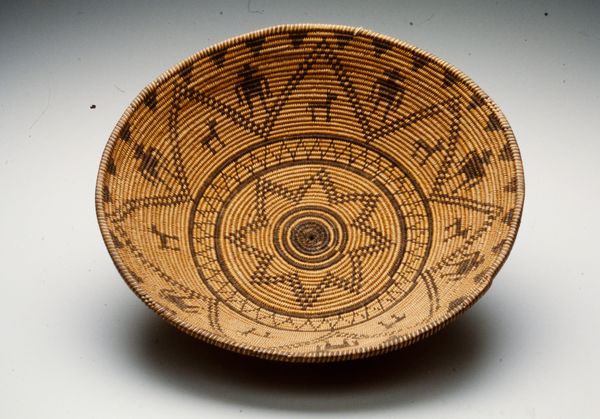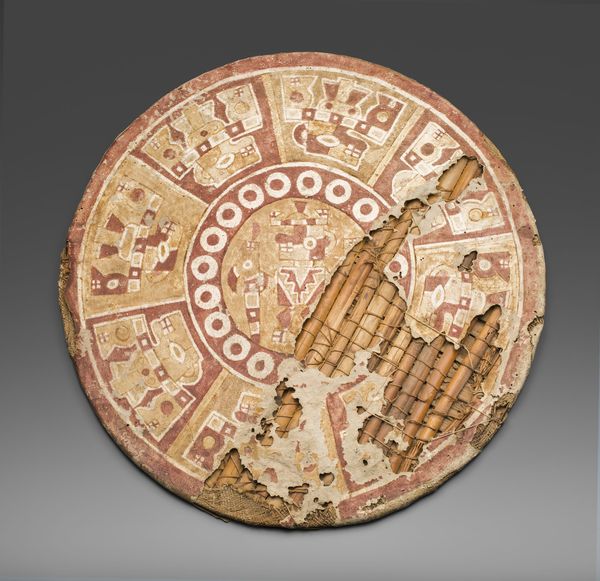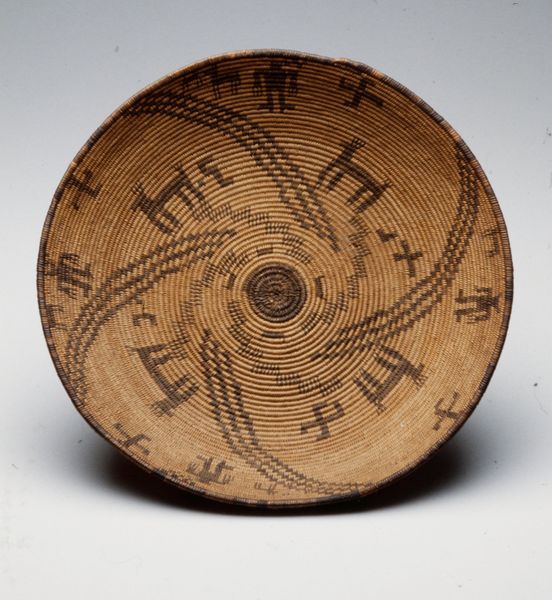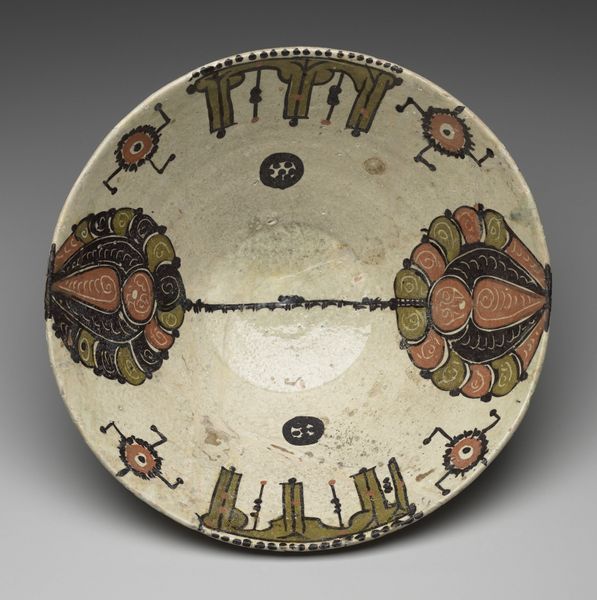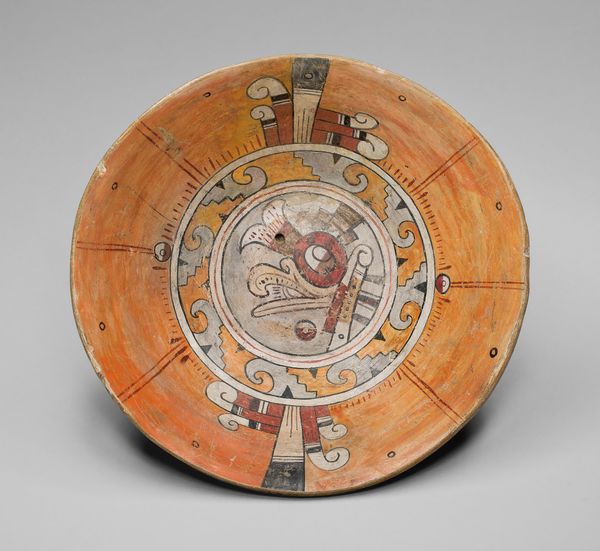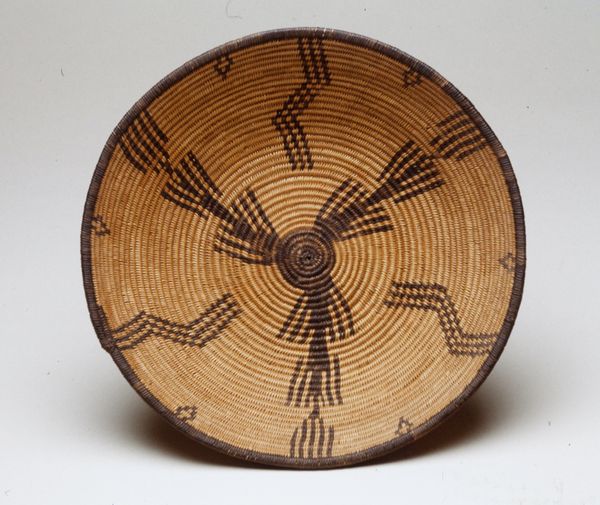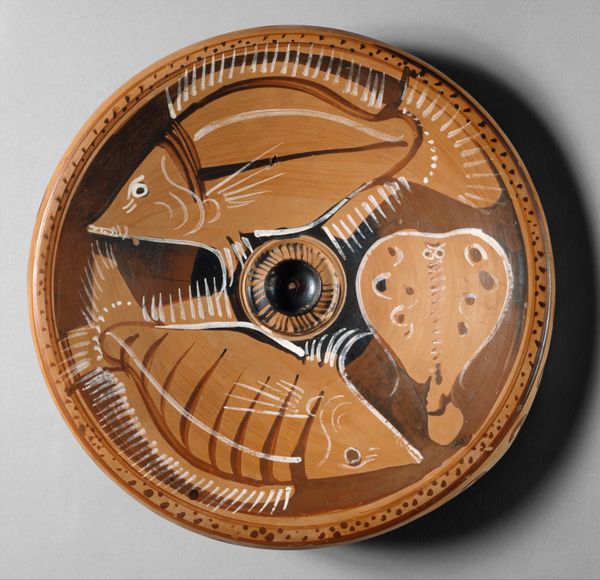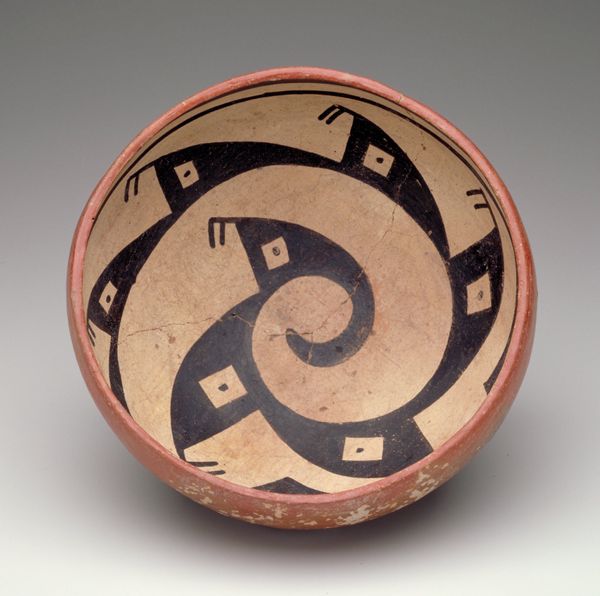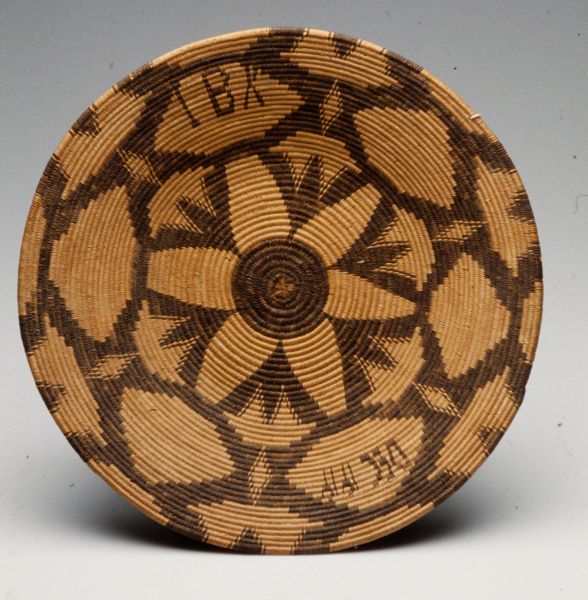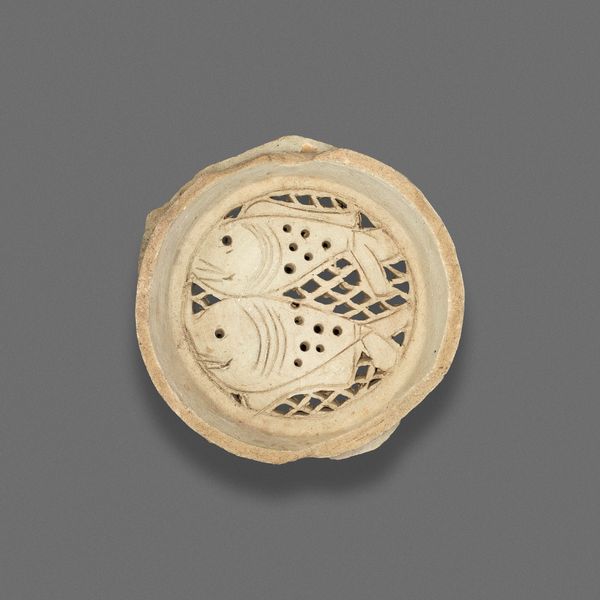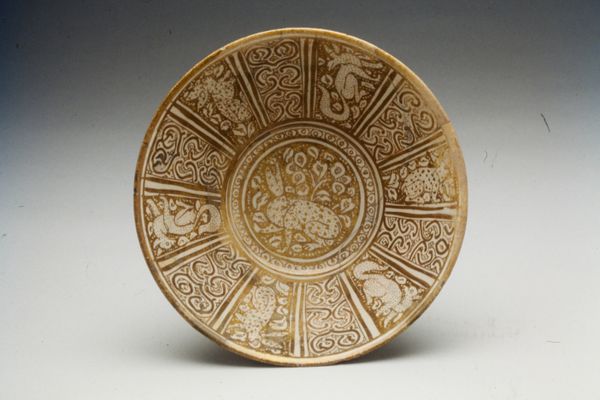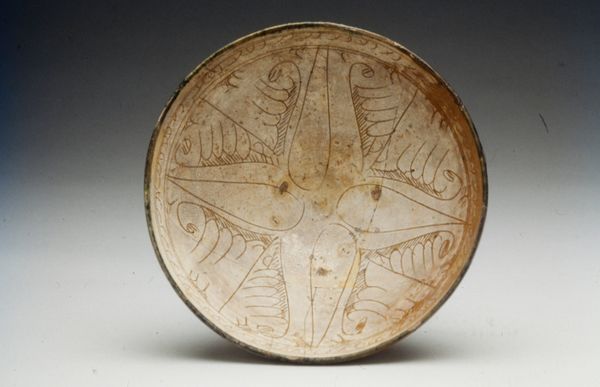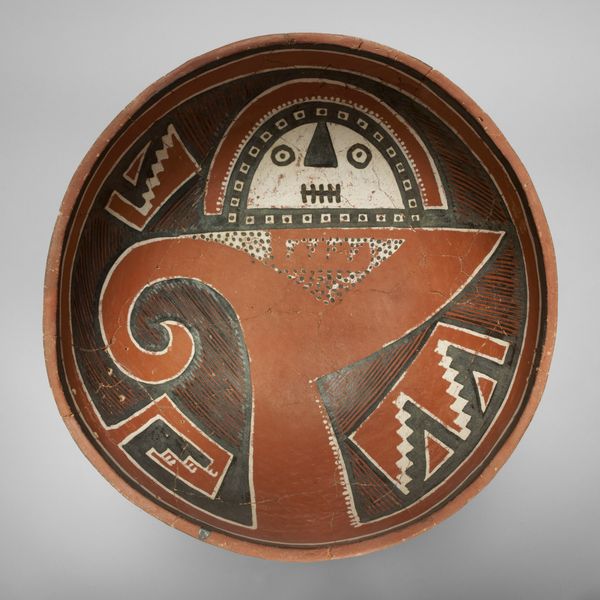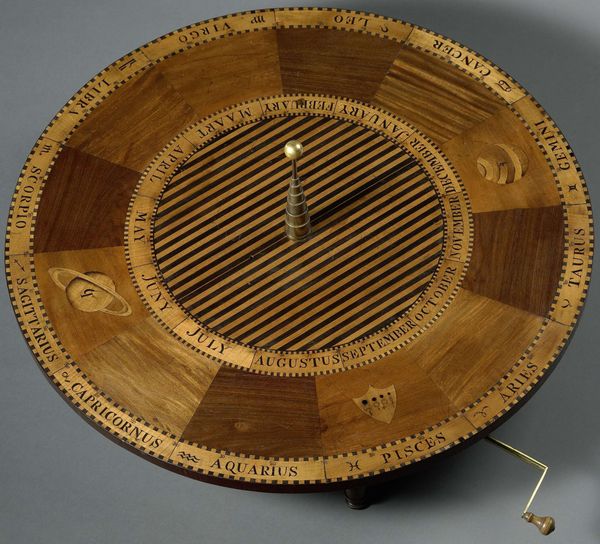
#
natural stone pattern
#
decorative element
#
egg art
#
pottery
#
cake food
#
culinary art
#
stoneware
#
geometric
#
plant
#
earthenware
#
watercolour illustration
#
watercolor
Dimensions: 5.1 × 61 cm (2 × 24 in.)
Copyright: Public Domain
Curator: This is a Gambling Tray, crafted around 1900 by an artist from the Yokuts people. What's grabbing your attention right away? Editor: The geometric arrangement of figures feels remarkably precise yet organic. I’m immediately struck by the radial symmetry and the somewhat unsettling placement of the playing pieces, almost like dancers frozen mid-step. Curator: Indeed, the overall design has a rigorous structure. Notice the concentric bands of decoration radiating from the center. One band features stylized human figures; another showcases a series of diamonds and triangles, offering a clear visual rhythm and a clear delineation of space on this gaming surface. Editor: I'm intrigued by what these figures represent in relation to the gambling game itself. Do they signify participants, perhaps ancestors, or even potential outcomes within the game's framework? Are they gendered, and what might that tell us about gender roles in Yokuts society and their participation in games of chance? Curator: These are important points. What truly stands out for me is the sophistication of its form. The weaving, the consistent repetition of shapes, and the equilibrium of the overall composition create a piece that’s as compelling visually as it likely was functionally. Editor: Absolutely. Thinking about function leads to other questions. For instance, who had access to this tray? Was it a communal object or reserved for particular individuals? The act of gambling itself can hold complex social meanings, serving as a vehicle for negotiating power, reinforcing community ties, or even redistributing resources, even as a spiritual act related to divination and the future. Curator: I see your point, situating this piece within a larger societal web adds invaluable texture and dimension. For me, even appreciating this from an art perspective, considering color and contrast can unlock some understanding. The earthy tones create a cohesive surface and add a unique aesthetic quality that reflects Indigenous weaving traditions. Editor: It's this synthesis of visual language and cultural practices that truly enriches the object. I think the simple elegance masks how much these choices had social implications. The geometric pattern may reflect a conceptual mapping of social roles onto a symbolic space. Curator: I agree. There's a subtle elegance at work within this indigenous artifact. Editor: Exactly, a deceptively intricate microcosm of Yokuts society etched onto a simple gaming surface.
Comments
No comments
Be the first to comment and join the conversation on the ultimate creative platform.
